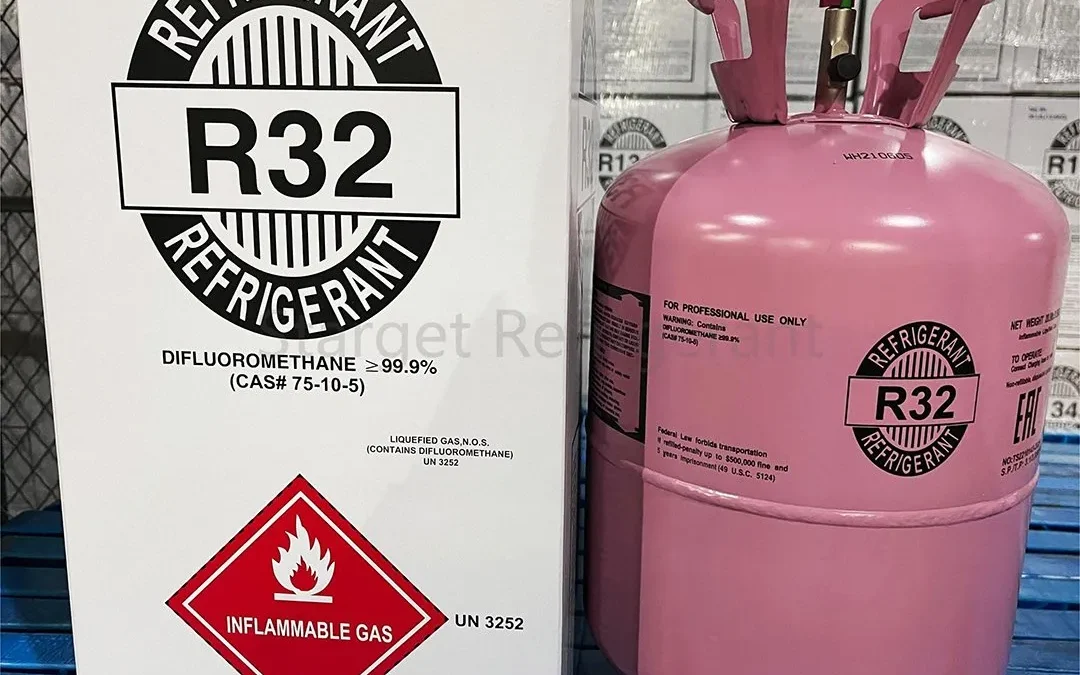Environmental Urgency:
Because of their Global Warming Potential (GWP), refrigerants are a major contributor to global warming. With a high GWP, older refrigerants like R410A and R22 have a greater effect on global warming if they are released into the atmosphere.
The GWP of R32, however, is 675, much lower than that of R410A, which is 2,088. R32 is a more ecologically friendly option due to its 68% GWP reduction. Furthermore, compared to blended refrigerants like R410A, R32 is a single-component refrigerant, which facilitates recycling. Your HVAC systems’ carbon footprint can be directly decreased by making the move to R32.
Consideration for International Regulations:
Stricter rules are being enforced by governments and environmental organisations around the world to phase out high-GWP refrigerants. Reducing the usage of hydrofluorocarbons (HFCs), especially R410A, is the goal of initiatives like the European Union’s F-Gas Regulation and the Kigali Amendment to the Montreal Protocol.
Manufacturers and end users can ensure compliance with these rules and future-proof their systems by using R32. Businesses can prevent possible fines, product bans, and retrofitting expenses related to non-compliance by taking this proactive strategy.
Enhanced Efficiency in Energy Use:
The exceptional energy efficiency of R32 is one of its most notable qualities. Compared to many of its predecessors, R32 offers superior heat transfer qualities and a larger cooling capacity, which enables HVAC systems to function more effectively. Increased energy efficiency lowers operating expenses for customers in addition to consuming less electricity.
This results in substantial long-term savings for both homes and companies. Making the conversion to an R32-based system can be a wise economical move given the steadily rising cost of electricity.
R32’s Cost-effectiveness:
Although switching to R32-compatible equipment may seem expensive at first, the long-term advantages exceed the costs. Long-term refrigerant costs are reduced since R32 uses less refrigerant to produce the same cooling effect as R410A.
Additionally, because it is a single component, maintenance and recharging procedures are made simpler, which eventually lowers service costs. With the right training, HVAC professionals can manage R32 systems with ease, substantially reducing maintenance and repair expenses.
Adaptability to Contemporary Technology:
Modern technologies are being quickly embraced by the HVAC sector to enhance user experience and system performance. Inverter technology and other contemporary, energy-efficient equipment are quite compatible with R32 refrigerant. R32 works well with inverter air conditioners, which modify the compressor speed to satisfy cooling requirements while improving efficiency and consuming less energy.
Additionally, manufacturers are rapidly creating R32-specific solutions to guarantee optimum performance and dependability. You may benefit from the most recent developments in HVAC technology by making the transition right away.
Global Adoption and Industry Trends:
R32 is becoming the industry standard for air conditioning in homes and businesses, not a passing trend. R32 has already been adopted by numerous top HVAC manufacturers, who have introduced new product lines specifically for its application. Better technologies are being developed as a result of this broad usage, and more R32-compatible systems are becoming available. Making the switch now will help you stay on track with the industry’s direction and prevent you from falling behind as the market gradually phases out older refrigerants.
Decreased Hazards to the Environment:
R32 provides other environmental benefits in addition to its lower GWP. Its one-component design lowers the possibility of leaks that could cause ozone depletion. In contrast to R22, which may deplete the ozone layer, R32 is ozone-friendly.
Additionally, because R32 is more efficient, less energy is used, which indirectly lowers greenhouse gas emissions from power plants. It is a vital component in the battle against climate change because of these two advantages.
Considerations for Safety and Training:
Despite its many benefits, R32 is categorised as an A2L refrigerant, which means it is somewhat flammable. For HVAC technicians to handle and install R32 systems safely, they must receive the appropriate training. However, when treated properly, the risk of flammability in practical applications is negligible.
In order to give technicians the skills they need to operate with R32, numerous nations and organisations are funding training initiatives. Businesses may guarantee that their workforce is well-equipped for the shift by implementing the move early.
Challenges of Delaying the Transition:
Delaying the R32 transition might lead to a number of problems. Costs will rise as older refrigerants become less available as they are phased out. Older systems will become more costly and challenging to maintain and service.
Businesses that disregard regulations also run the danger of fines and harm to their reputation. By taking immediate action, you may steer clear of these problems and make use of R32’s advantages before your rivals do.
Future Prospects for Refrigerants:
R32 is a big progress in the direction of more environmentally friendly refrigeration techniques, even though it is not the perfect solution. Alternative cooling technologies and even lower-GWP refrigerants are being researched. Nonetheless, R32 offers a practical and accessible remedy for the present legal and environmental issues.
Final Thoughts:
Businesses and individuals who are dedicated to reducing expenses, regulatory compliance, and environmental responsibility must make the switch to R32 refrigerant. It is the best refrigerant for the present and the foreseeable future due to its lower GWP, exceptional energy efficiency, and compatibility with contemporary HVAC systems.
Frequently Asked Questions:
1. How Is The Manufacture Of Refrigerant Impacted By Environmental Regulations?
Reducing the production of high-GWP refrigerants is the goal of laws like the Kigali Amendment. In line with global environmental goals, manufacturers are moving towards low-GWP alternatives like R-32 and hydrofluoroolefins (HFOs).
2. Are There Any GWP-Free Refrigerants?
Natural refrigerants with low or no GWP include carbon dioxide (R-744) and ammonia (R-717). Despite being environmentally beneficial, these choices are not frequently utilised in domestic air conditioning systems because of operational and safety issues.


